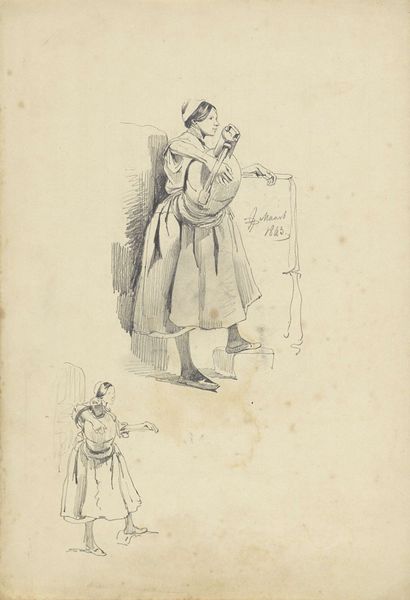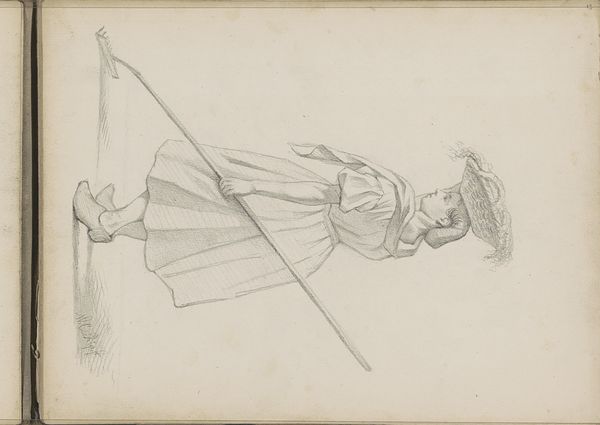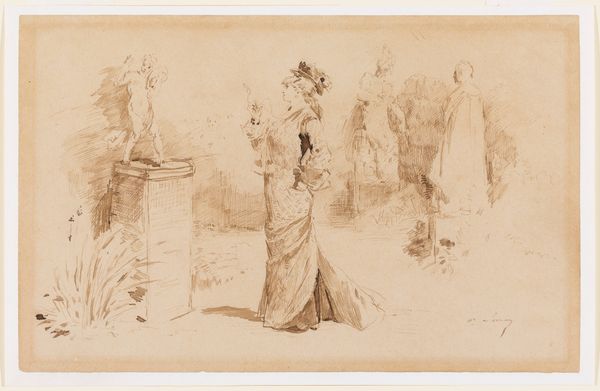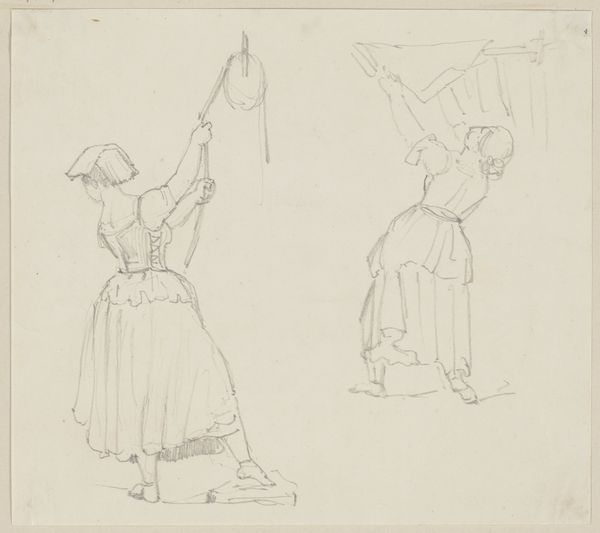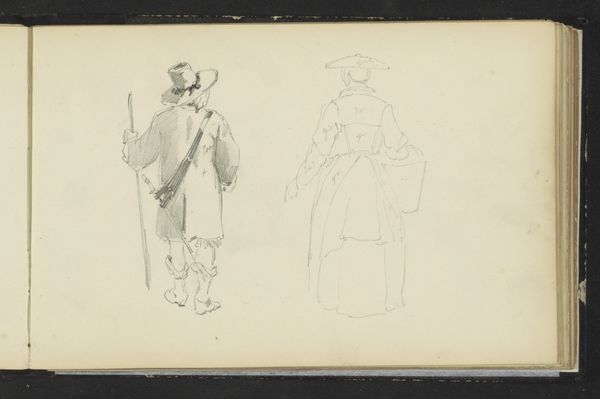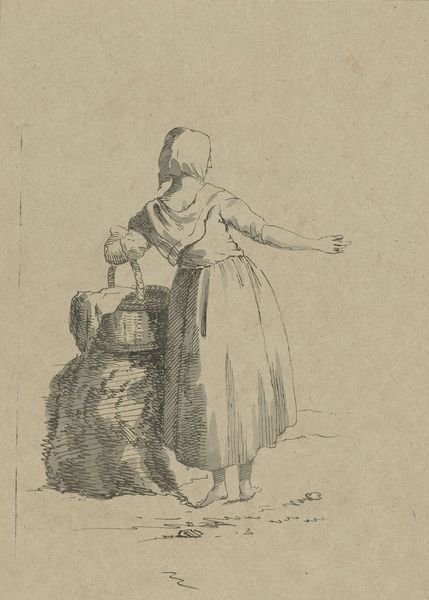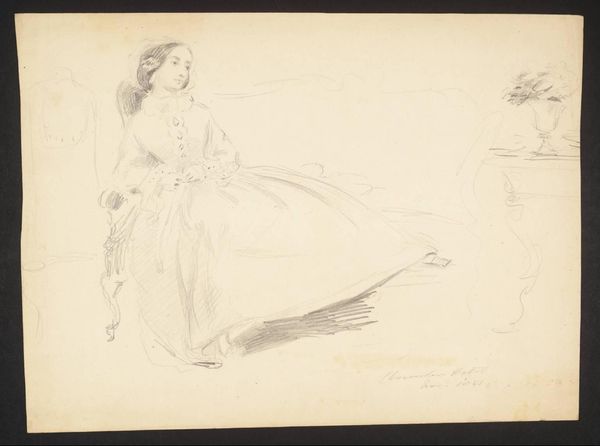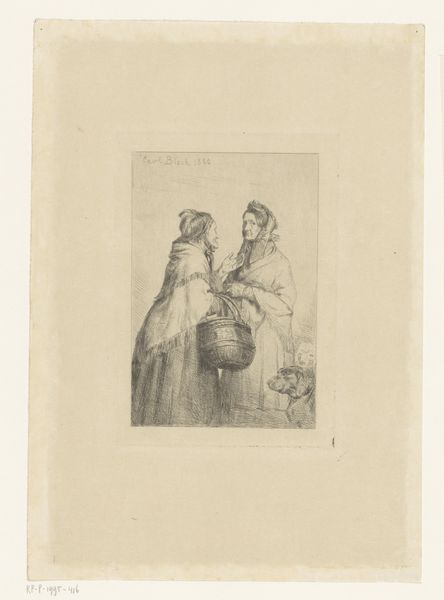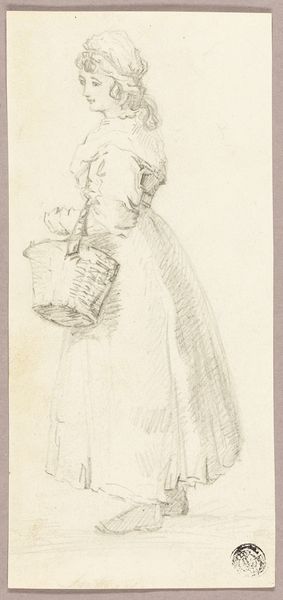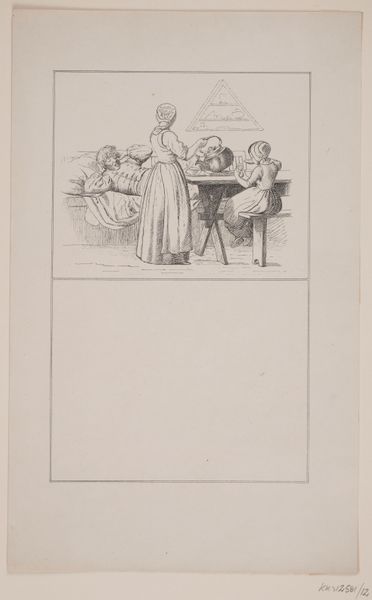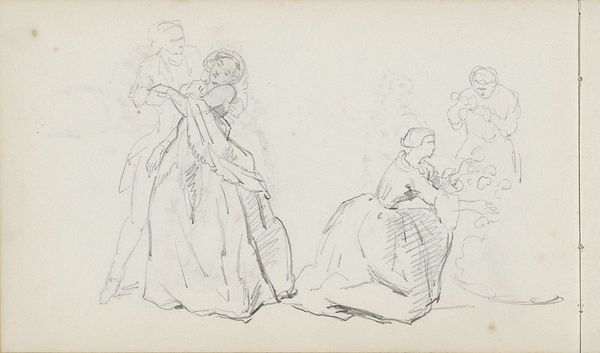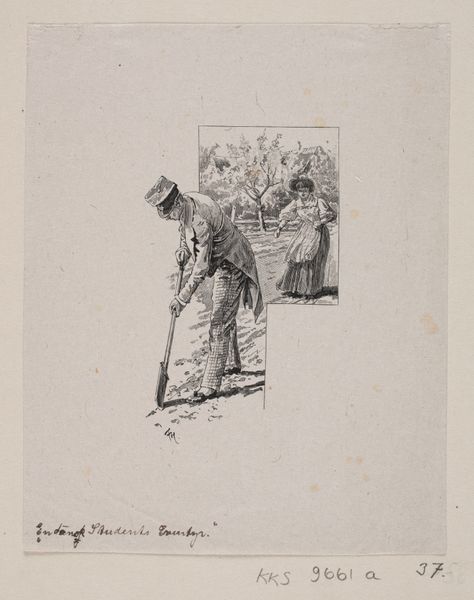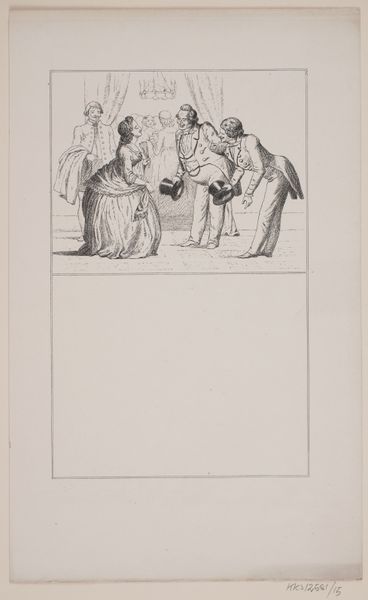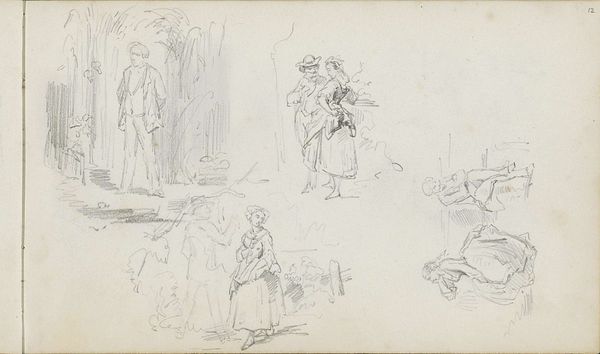
Copyright: Public Domain
Editor: Georg Melchior Kraus' "Man and Woman with a Basket," dating to around 1775-1779, is quite simple in its rendering using pen, pencil, graphite and ink on paper. I'm struck by how their faces are hidden, obscuring their identities. How do you interpret this piece? Curator: The obscured faces indeed present an interesting starting point. Consider the historical context: such depictions often functioned as archetypes rather than portraits of specific individuals. Notice, though, the specificity of their attire and the inclusion of the basket—these are symbols, echoing the iconography of everyday labor during that era. What feelings are evoked for you through those visual elements of labor? Editor: It does make me think of folk tales, the way they are posed, almost like characters enacting a familiar story, carrying burdens, both literally with the basket and maybe figuratively as well. The woman is seated, almost static. Curator: Exactly! Kraus uses recognizable figures and associated props like the staff and seated woman as conveyors of societal memory and meaning. Think of it like this, those props, those objects are heavy, symbolic… do you feel that compositional symbolism gives these figures universality or restricts them within the context of 18th century German life? Editor: I think it gives them universality but with a very specific historical flavour. The universal ideas of labor and expectation but filtered through the details, time and place. Curator: Precisely. This work encapsulates not just individual identity, but collective memory expressed through accessible, archetypal forms. Seeing beyond the surface invites us to contemplate our continuing dialogue with symbols throughout art history and our lives. Editor: I’m definitely looking at how artworks use symbols and imagery differently now! Thanks for your time!
Comments
No comments
Be the first to comment and join the conversation on the ultimate creative platform.
